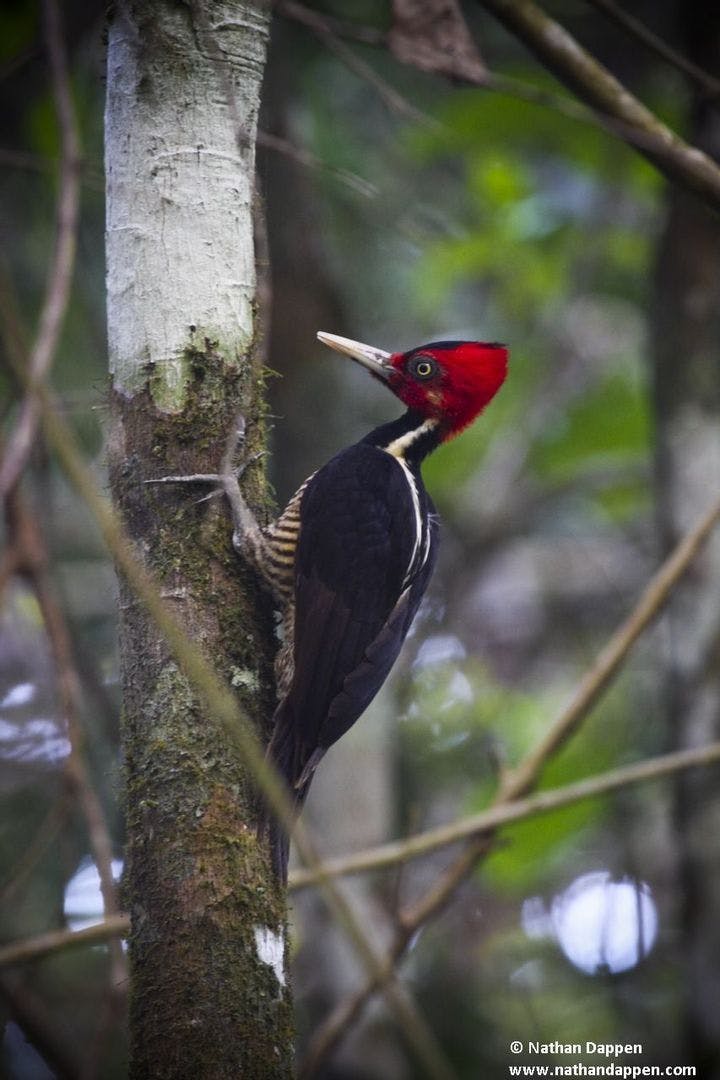Summer 2008
Ghost Bird
– The Wilson Quarterly
Those looking for the elusive ivory-billed woodpecker would do well to listen to the locals.
The ivory-billed woodpecker has fascinated the public since Native Americans used the bird’s skins to carry medicine bundles and traded its remains as far north as Canada. John James Audubon compared the beauty of its stunning plumage and prominent bill to the works of Flemish painter Anthony Vandyke, and it inspired writers such as William Faulkner and Walker Percy. But relentless hunting and the disappearance of the ivory-bill’s habitat in southern bottomland forests took their toll. The last documented sightings were in the 1940s.
Over the years, bird experts and rural residents reported occasional sightings, but their claims were ridiculed, writes Michael K. Steinberg, a geographer at the University of Alabama. “Few die-hards seem capable of believing that anybody else—whether a knowledgeable outdoors person or even a respected ornithologist—could actually see or hear an ivory-bill.” So when a team of scientists declared in 2005 that they had laid eyes on an ivory-bill in eastern Arkansas, and produced a fuzzy 11-second video as evidence, there was much rejoicing about this “official” sighting. But skeptics have questioned whether the video shows the famous bird or its common, similar-looking relative, the pileated woodpecker.
Such disputes are frequent in the scientific world. But because “the ivory-bill is the Holy Grail among birders,” and because millions in federal money for conservation efforts hang in the balance, the debate stirs deep passions among both ornithologists and rural residents such as Steinberg’s neighbor who, after a few drinks, often threatens to “go into the swamp and ‘find that damn bird.’ ”
What really ruffles Steinberg’s feathers is the marginalization of locals who report glimpsing the elusive woodpecker. “These people are often far more familiar with the sights and sounds of deep swamps than academics or birders who seldom venture into southern bayous,” he says. Local hunters and fishers are also the most likely to brave the mosquitoes, alligators, snakes, and prickly palmettos of the birds’ favored environment.
In preparing a book on the search for the ivory-billed woodpecker in Louisiana, Steinberg ran down many of the reported sightings. Photos are few, which is no surprise given the forbidding, dense terrain; the ivory-bill’s reportedly fast, straight, duck-like flying pattern; and the likelihood that after generations of intense hunting, any surviving birds are probably selected to be wary of humans. But Steinberg concludes that the sightings are consistent enough to suggest that ivory-bills still exist.
The next evidence of the ivory-bill’s existence, he predicts, will be produced by “a rural resident who may have little experience or even interest in bird watching.” The birding world should prepare to take heed. To discount rural dwellers’ reports “is not only shortsighted, it may be detrimental to ivory-bill preservation.”
* * *
The Source: "Bottomland Ghost: Southern Encounters and Obsessions With the Ivory-Billed Woodpecker" by Michael K. Steinberg, in Southern Cultures, Spring 2008.
Photo courtesy of Flickr/Nathan Dappen
